- Universities across the country steer mandatory student fee proceeds and other privileges to intensely ideological Public Interest Research Groups [David Seidemann, City Journal; PIRG’s crucial role in backing the truly ghastly CPSIA law on children’s products] When a university shuts off this money spigot, does the First Amendment cut more in favor of the group’s right to go on collecting money, or the rights of “students compelled to fund advocacy with which they may not agree”? [Short Circuit, scroll to 14th item on Ninth Circuit decision in Arizona Students’ Association v. Arizona Board of Regents]
- Appeal to “personal experience, performance, and radical politics” changing college debate for the worse [John Hinderaker, PowerLine, 2014 (thanks commenter for spotting date)]
- “The Perils of Writing a Provocative Email at Yale” [Conor Friedersdorf, The Atlantic, on Nicholas and Erika Christakis case at Yale; Paul Caron/TaxProf with more links] More: Identity, activism. and sensitivity on campus: Nathan Heller report from Oberlin [New Yorker]
- Government is our provider: new push to extend school feeding program into community colleges [George Leef, Pope Center]
- University of Northern Colorado: “‘Bias Response Team’ Threatened Prof To Change His Lessons” [Jillian Kay Melchior, Heat Street] Candidates for tenure at Pomona College will need to explain what they are doing to promote diversity in classroom [Inside Higher Ed]
- “When Social Justice Education Is Mandatory, But Math Is Not” [Robby Soave; University of Massachusetts, Amherst]
Posts Tagged ‘PIRG’
CPSIA chronicles, September 20
- Rep. Michael Burgess (R-Tex.) doesn’t think Rep. Waxman’s pretend hearing Sept. 10 was enough, and writes a letter to Reps. Waxman and Rush (PDF courtesy Motorcycle Industry Council) explaining why a real hearing is needed (including as an addendum my WSJ piece from last Monday).
- Speaking of CPSIA author Rep. Bobby Rush (D-Ill.), he’s praised the new rhinestone ban [Woldenberg]
- At the Wall Street Journal, a letter to the editor regarding my op-ed of last week generally agrees with its thrust but claims that I “[err] when assigning blame to consumer groups” among others for the enactment. I find this charge baffling, since groups like Public Citizen, PIRG and the Consumer Federation of America 1) were routinely cited in the press during the bill’s run-up to enactment as key advocates of its more extreme provisions, 2) have loudly claimed credit for enacting those provisions and the overall bill ever since, 3) have been routinely cited this year in the press as key opponents of any effort to revisit the law in Congress. Why strive to excuse them from a responsibility that they gladly shoulder? Carter Wood at ShopFloor also notes that labor unions unwisely cheered on their purported consumer-group allies, a stance one hopes they are rethinking in light of the statute’s actual effects on American employers and jobs.
- BoardGameGeek had a discussion of the law again this summer, mostly focusing on the tracking label rules and the burden they pose to makers of new games, but also noting the thrift/reseller effects (earlier). Meanwhile, Handmade Toy Alliance activist Dan Marshall notes on Twitter, “Just spoke with guy who invented a board game about dinosaurs. He’s paying $2400 to get it tested 4 #CPSIA and is mad as hell about Mattel.”
- So let’s all panic now: NPR reports minute amounts of lead alloy in a Disney-branded zipper.
- Before CPSIA came along, Illinois lawmakers enacted their own lead law which, stunt-like, sets an even lower permissible lead level often flunked by common substances such as ordinary garden dirt, according to Rick Woldenberg (earlier on dirt, and related on rocks). More: Wacky Hermit.
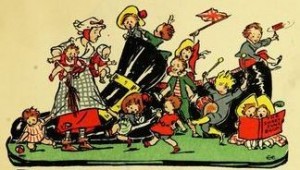

PUBLIC DOMAIN IMAGES from Ethel Everett, illustrator, Nursery Rhymes (1900), courtesy ChildrensLibrary.org.
CPSIA: StoryBlox closing its doors
PIRG be not proud: “Until recently, I had high hopes that this law would be amended. …![]() We do not mass produce our products, for that our customers love us, and for that congress has made it impossible for us to continue selling our toys without breaking the law.” — Tammy Bowles, founder of the Ohio-based educational plaything line StoryBlox, whose former line can be browsed here. More: Ken at Popehat.
We do not mass produce our products, for that our customers love us, and for that congress has made it impossible for us to continue selling our toys without breaking the law.” — Tammy Bowles, founder of the Ohio-based educational plaything line StoryBlox, whose former line can be browsed here. More: Ken at Popehat.
CPSIA: “Blowback” on Capitol Hill
Neil Munro covers it at National Journal (PDF, courtesy AmendTheCPSIA), and mentions toward the end a certain blog that “has rallied opponents of the law”. A few highlights: 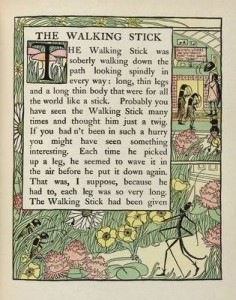
- “‘Like every member of Congress, I’ve heard from people in my district … [who say] they will literally be put out of business because of something that China did,’ said Rep. Jason Altmire, D-Pa., chairman of the House Small Business Committee’s Investigations and Oversight Panel. ‘We cast the net wider than we should have.'”
- Later, however: “Altmire’s position reflects tensions in the Democratic caucus.” You bet it does: “Most Democratic legislators, staff aides, and allied advocates have resisted calls for a change in the law”, and one, regrettably anonymous, claims that opponents “are deliberately misreading the law to make it unworkable” so as to get it reopened. Among “allied advocates”, there’s Elizabeth Hitchcock, the public health advocate for the federation of state Public Interest Research Groups, who is quite dismissive of the cries of small makers going under: “Complaints about job losses in the small-business sector are usually a mask for the interests of large firms, Hitchcock said.” More on the PIRG groups here, here, here, here, here, and here (& more in comments and from Deputy Headmistress).
- “Lobbyists on both sides of the issue” say the CPSIA outcry could affect the fate of an upcoming Waxman-backed bill called the Kid-Safe Chemicals Act, “which would apply the environmentalists’ ‘precautionary principle’ by requiring extensive safety testing of chemicals found in plastics, food, textiles, and manufactured goods before they could be sold.”
CPSIA: Things I learned at the rally
Last Wednesday’s CPSIA rally at the Capitol drew an overflow crowd of hundreds, with thousands more reportedly watching from around the world via webcast. Many speakers had powerful stories to tell, and cameras from CNN and ABC were on hand to record them; AP mentioned the event in covering the dirtbike-ban story. There is, as you might imagine, no way to upstage a six-year-old motocross champion who declares from the podium, “I promise I won’t eat my dirt bike”.
A few things I learned by attending:
- Ordinary bikes (not the motorized kind) are clearly out of compliance with the law because of the leaded brass in certain components, and have been given no exemption. I’m still wondering why the CPSC directed the motorbike dealers to tarp over their inventory but did not do the same with the ordinary-bike dealers. Earlier here; much more (PDF) in this CPSC submission by Mayer Brown for the Bicycle Product Suppliers Association.
- Until I saw their handout leaflet, it hadn’t sunk in that the non-profit and charitable giants in resale, including Goodwill, Salvation Army, Easter Seals, Volunteers of America, and St. Vincent de Paul, have banded together in a Donated Goods Coalition. Good for them, and I hope someone listens.
- Even blogging the subject as much as I have, I’ve somehow said almost nothing about CPSIA’s requirements for batch numbering, labeling and tracking of kids’ products, due to hit later this year. It seems these requirements all by themselves will suffice to wipe out small producers in droves even if the crazy testing requirements can somehow be made sane. A few write-ups touching on the subject: Handmade Toy Alliance (Word document), Kathleen Fasanella/Fashion Incubator, Publisher’s Weekly.
- The rally happened because of the efforts of grass-roots business people around the country, above all Rick Woldenberg of Learning Resources. (The story of the Oregon delegation could stand for that of many others.) Motorbike people were much in evidence. Also present: people from trade associations from regular businesses not been much heard from in the CPSIA furor of recent months, including makers of shoes and footwear, cribs, and even household cleansers, all of whom turned out to have stories to tell. Who knew there was a whole association specializing in the little items you get when you put in the quarter in the vending machine and turn the crank?
- Kids’-book author (and valued commenter) Carol Baicker-McKee was there and gave a superb talk, making effective use of a copy of Orwell’s 1984. Otherwise, however, among groups deeply affected by the legislation, the book and library trades were conspicuous by their absence. I wasn’t the only one who noticed this; so did Publisher’s Weekly.
- I finally got to meet face to face many persons who have been favorably mentioned in these columns over the past three months. I was not surprised to find a whole lot of nice, dedicated people, the sort of people you’d want to be making products for your children to use. You, Reader, would have enjoyed meeting them too.
- Many members of Congress spoke. All were Republican, and a few were pretty good. For better or worse (maybe some of each) there was a minimum of partisanship, with scant mention of the reports that the Democratic House leadership had ordered members not to attend. Several lawmakers minimized the institutional role in the debacle of Congress (which passed the law last year almost unanimously), instead seeking to throw the blame onto the CPSC’s management, which put them surprisingly close to the position of Henry Waxman himself. One GOP member said it was important to be nice to the Democrats and not alienate them, since they held all the power.
 This may have been good advice, but I was still a little surprised.
This may have been good advice, but I was still a little surprised. - Amid a great deal of talk about unintended consequences, very little was said about there being actual adversaries out there, who know quite well what the law is doing and support it anyway. If more than a word or two was breathed about the roles of Public Citizen, PIRG, or the various members of Congress who are actively hostile on the issue (and not just “needing to be educated”), I missed it. Which meant (it seemed to me) that some of the good people who’d taken the trouble to come to Washington were going to be surprised and perhaps unprepared when they discovered figures out there like, oh, just to pick randomly, Illinois Sen. Dick Durbin, whose positions are not so much unreflected-on as deeply hostile (and with mysteriously unsourced numbers too).

Speaking of which, Consumers Union, publisher of Consumers Reports, confirmed once again that it falls into the “hostile” and not merely “unreflective/ uninformed” category with this deplorable hatchet job, which provoked a slew of angry, substantive comments; see also blog posts including those of Carol Baicker-McKee and Sheeshamunga.
More rally coverage: Domestic Diva, Polka Dot Patch.
Public domain image: Yankee Mother Goose (1902), illustrator Ella S. Brison, courtesy ChildrensLibrary.org.
CPSIA: getting Washington’s attention
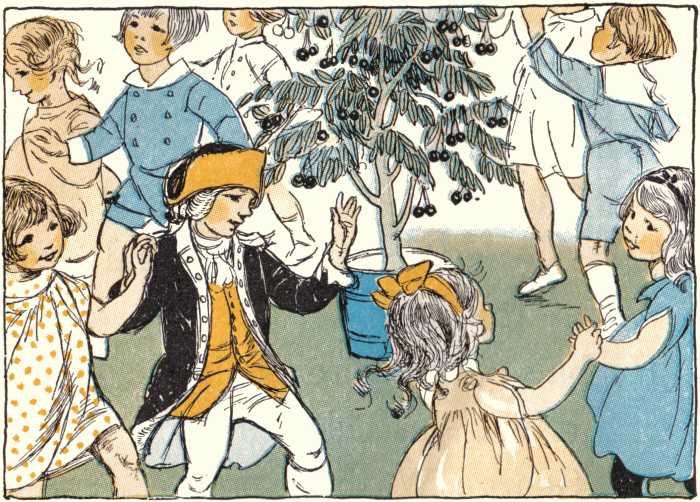
Given that nearly every member of Congress voted for CPSIA last year, it’s not surprising that that body of lawmakers was slow to respond to reports of the law’s catastrophic consequences. It’s beginning to happen now, though. Republicans have been in the lead, the latest sign being a strong letter from ranking House Commerce minority members Reps. George Radanovich (R-Calif.) and Joe Barton (R-Calif.) asking for a hearing. The motorcycle/powersports issue has also kindled widespread interest from Hill members (example: Rep. Michael Simpson, R-Idaho).
On March 4 there was a welcome break in the ice on the Democratic side as well. Rep. John Dingell (D-Mich.) sent a letter to the commissioners of the CPSC that, although cautiously worded, acknowledges many of the reports of calamitous consequences from around the country, something that his colleagues Rep. Henry Waxman (D-Calif.), Rep. Bobby Rush (D-Ill.) and Rep. Jan Schakowsky (D-Ill.) have been unwilling to do (when not dismissing those reports as based on misinformed or uninformed rumor). Of course, there is famously no love lost between Dingell and Waxman, who ousted him as Commerce chair. But Dingell’s stand could give cover for other Democrats to join in heeding the public outcry as legitimate. That letter in turn has prompted many CPSIA critics to write Dingell letters in hopes of arming him with more facts and arguments on the law’s ill effects: see in particular Rick Woldenberg and Wacky Hermit.
Waxman, for his part, has announced his intent to hold no hearing on the law until the Obama Administration installs a new chair at the Consumer Product Safety Commission. That serves the multiple functions of 1) stalling (while more small enterprises are driven out of business and thus are neutralized as political threats); 2) reinforcing the impression that the ball is in someone else’s court on addressing the law’s harms; 3) assisting in orchestrating whatever hearing is eventually held, since he expects an ally of his own to be installed as CPSC chair (the ultimate nightmare for CPSIA critics in that job would be someone like Pamela Gilbert, the class action lawyer, former plaintiff’s-lawyer lobbyist, and longtime Litigation Lobby figure who ran the Obama transition effort for the agency).
The membership of the House Energy and Commerce Committee, by the way, is listed here (hit “membership”; scroll to “Subcommittee on Commerce, Trade, and Consumer Protection” to find the members most directly involved). The membership of the Senate Commerce Committee is listed here and that of the Subcommittee on Consumer Protection, Product Safety and Insurance here.
Some miscellaneous weekend reading about the law: John Markley, Bureaucrash; Michael Maletic (Weil Gotshal & Manges), Republican National Lawyers Association; Ed Driscoll, Pajamas Media.
Public domain graphic: Grandma’s Graphics, Ruth Mary Hallock.
CPSIA chronicles, March 3
- There’s new blogging on the fate of pre-1985 children’s books from book restorer and conservator Javamom, Jane Badger (iBookNet, U.K.), Dillon Hillas, Wellspring Creations, and Small-Leaved Shamrock.
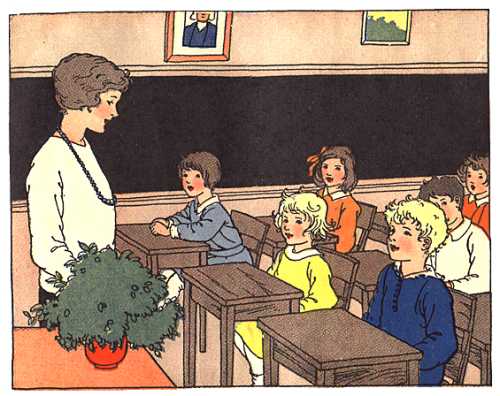 Deputy Headmistress continues to blog the book angle intensively, as does Valerie Jacobsen (read this post in particular). Note also the comment from Nancy Welliver on her February 11 post: “We are a used curriculum and book seller. We have removed 3,500 books from our website. … until recently publishers did not put printing dates in books, only copyright dates. So a book that is copyrighted 1976 may have been printed in 1988 and therefore legal to sell, So how do we know which are printed before and which after 1985? So we have removed all books for children with copyright date 1985 and before.” There’s also a page at cpsia-central (the Ning group) on books and libraries.
Deputy Headmistress continues to blog the book angle intensively, as does Valerie Jacobsen (read this post in particular). Note also the comment from Nancy Welliver on her February 11 post: “We are a used curriculum and book seller. We have removed 3,500 books from our website. … until recently publishers did not put printing dates in books, only copyright dates. So a book that is copyrighted 1976 may have been printed in 1988 and therefore legal to sell, So how do we know which are printed before and which after 1985? So we have removed all books for children with copyright date 1985 and before.” There’s also a page at cpsia-central (the Ning group) on books and libraries. - The law is also having a major impact on sellers of new children’s books, given that the only newer books presumed safe for legal purposes without testing are completely plain books with no embellishments or non-paper features. Don’t miss the letter at Wellspring Creations from “Jackie”, who identifies herself as the manager of the children’s book section at a Half Price Books store, part of a large chain that sells publisher’s remainders and overstocks as well as used books:
I have experienced the severity of this issue first-hand. … Initially, it didn’t seem like this would have much of an impact on the kids section, but as I went through my section pulling everything that was potentially harmful, I soon realized that this was going to decimate my section. My display tables were over halfway empty, and there were half-empty or completely empty shelves all throughout the section. … The kids cooking shelf went from being packed full to only having half a dozen books left, all because most of the cookbooks were spiral-bound with metal. …
The day that I had to get rid of all those books was one of the roughest days I’ve ever had at work. The kids section is my pride and joy, my baby, and I had to not only watch it get torn apart- I had to do it myself. It was heartbreaking.
The happy ending, if you want to call it that, is that eventually many or most of the new books are likely to return to the shelves after the chain puts them through testing — though it’s more likely to take such a step for a mass-selling branded item piled high on display tables than for a specialty cookbook expected to sell only in the dozens of copies. Go read the whole thing.
- Community Homestead is a center for developmentally disabled adults in rural Wisconsin that has sold residents’ handcraft toys. Its CPSIA story is here.
- Dust-ups in comments sections are not my thing, but some people enjoy them, and they keep breaking out on the occasions when someone still attempts an aggressive defense of this bad law. Thus when the Chicago Daily Herald printed a letter from Alexandra Lozanoff of the Illinois Public Interest Research Group (PIRG) yesterday rhapsodizing about the law, numerous commenters jumped in to express rather sharp disagreement. A state legislator in Orangeburg, South Carolina put her name to a piece in the local paper attacking Sen. Jim DeMint for sponsoring CPSIA reform, provoking dozens of comments, most taking issue. The Natural Resources Defense Council, which is invested in defending CPSIA in part because of the law’s phthalates ban, ran an ill-informed piece pretentiously titled “The Artisan Toymaker’s CPSIA Exemption Guide” and was promptly spanked by knowledgeable commenters, a fate that also befell the left-leaning crew at Moms Rising. The lengthy comments section on John Holbo’s thoughtful followup post at Crooked Timber presented the spectacle of one agitated and flailing defender of the law pretty much surrounded by people trying to talk sense into him. Someone adopting the monicker “Civil Justice” wandered into the Etsy forums to push Lawsuit Lobby views and was not met with pleasure by the assembled crafters, an episode which may be related to the one already told about how the misnamed Center for Justice and Democracy, a group with views antipodal to our own, suggested that we all were insensitive to children’s health and then refused to let any letters from critics through moderation, claiming to feel threatened by the letters’ tone (examples of the sorts of letter CJD found too intimidating in tone to run: Mark Riffey, Olivia @ BabyCandyStore). Some other previously linked comments discussions: The Pump Handle (profoundly misguided contributor corrected by Deputy Headmistress, Kathleen Fasanella, etc.), Consumer Reports, Greco Woodcrafting (Public Citizen’s David Arkush vs. the world), and, of course, Justinian Lane.
- Even a casual acquaintance with CPSIA blogging is enough to show that homeschooling parents have taken an extraordinary role in leading the resistance to the law. Bloggers like CalifMom have predicted that the law will have numerous harmful impacts on homeschoolers, and homeschool curriculum suppliers such as Hands and Hearts History Discovery Kits and Hope Chest Legacy have already closed down because of the impracticability of compliance. So it’s unfortunate that the Home School Legal Defense Association (HSLDA) seems to have so little clue what’s going on.
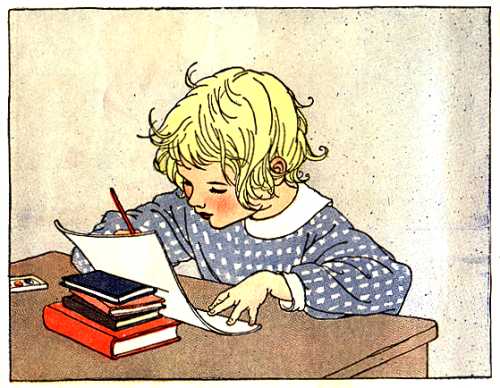
CPSIA chronicles, February 27
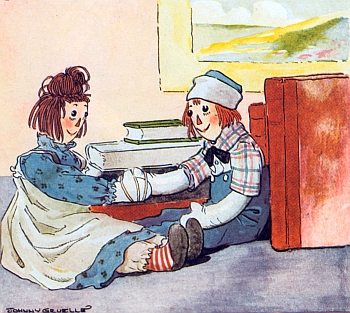
- Finally! Today’s Boston Globe covers the thrift-store calamity:
In recent weeks, Goodwill pulled all children’s merchandise from its nine stores in the state. Thrift chain Second Time Around eliminated kids’ clothing from several of its 16 shops. St Vincent de Paul is currently removing children’s clothing with metal zippers, buttons, and painted fabrics from its processing center, which sends out merchandise to its six stores in Massachusetts.
It’s exactly the sort of coverage that’s been overdue in the biggest newspapers since Feb. 10: well-reported, making clear the human costs of the law for both cash-strapped shoppers and charitable sponsors, and including words like “devastating” and “heartbreaking”. And on page one.
- If you missed it yesterday, Overlawyered gets results! Although sometimes the opposite of the kind we intend. Yesterday we hailed as a breakthrough the House Small Business Committee’s willingness to hold a hearing next week on the costs of CPSIA. Within a few hours, as Rick Woldenberg relates, Congressional staffers hastily put out word that they were canceling the hearing and that the idea is “not likely to ever be brought back”. There’s no way for us to know just who placed the phone call, but odds are good it was someone who realized that letting people from around the country get in front of a microphone and talk about this law’s effects would not exactly do wonders for the image of Henry Waxman, Bobby Rush, Jan Schakowsky, Public Citizen, PIRG, or their allies. More on the cancellation from Rick Woldenberg, who reports that this is the third time he’s been disinvited from Capitol Hill testimony. Sounds like someone really dislikes the message he would deliver.
- Hair bow makers on the verge of a nervous breakdown.
- The Examiner, which has a wide readership in Washington, D.C., San Francisco, and other cities, is out today with a great editorial on CPSIA which also generously directs readers to this site and its “chilling” reports. It concludes: “This law is an utter disaster. Congress ought to fix it, immediately.” The Examiner also quotes Sen. Mark Pryor (D-Ark.), one of the law’s sponsors, as saying “the law allows the CPSC to make ‘commonsense exceptions’ to anti-lead requirements.” This is not the first time I have been obliged to wonder whether Sen. Pryor actually has a close familiarity with the terms of the bill he helped guide to passage, and if not, whose summaries he has been relying on when he talks to the press.

It is precisely because the law does not confer on the CPSC any “commonsense exception” authority that the commission was obliged to turn down the makers of kids’ minibikes in their plea for an exemption the other day. Same for many other instances that could be cited, such as the pre-1985 books and the size 10 winter coats with zippers and snaps that are being yanked from thrift store shelves. Had the commission such a “commonsense exception” discretion, it would almost certainly have acted by now to defuse these sources of public outcry. To repeat the question: who does Sen. Pryor rely on for his briefings? - Speaking of products with vanishingly low risk of poisoning that have trouble obtaining commonsense exemptions, we’ve been remiss in not staying on the case of ballpoint pens, mentioned in our Feb. 6 and Feb. 13 roundups. Deputy Headmistress has quite a bit more on the legal limbo occupied by the writing implements, which appear now to be unlawful when intended primarily for under-12 use. And visitor “Scott” wrote last week in our comments section:
What still amazes me is that the story about ballpoint pens being in violation of the CPSIA isn’t getting more notice. The CPSC admits that ballpoint pens intended for children are covered. As it happens, the US trade association for the makers of pens, pencils and erasers has sent a letter to the CPSC that ballpoint pens are not-compliant and no existing alloy satisfies the lead limits. It may take 2 years to develop an alloy, if one exists. I can only conclude that there must be very very very many stores not in compliance and ‘poisoning’ our children with lead. Are these stores not facing strict liability and risking felony criminal liability including 5 years in prison and $250,000 fines? The stay by the CPSC doesn’t help the pen-makers or sellers, because they’re in knowing violation of the lead limits. All they can hope for is that none of the 50 state attorney generals decides to prosecute what would appear to be a slam-dunk case. There is a chance that the CPSC may eventually decide to make an exemption for pens, however the CPSC admits that its staff is ‘not yet aware of any substance as to which the required showing [of no absorption of any lead into the human body] can be made.’.

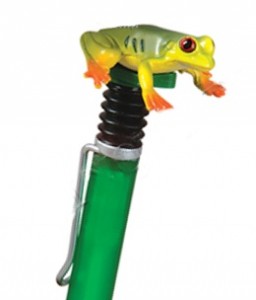
CPSIA: N.Y. Times runs three letters
[Title of post revised to reflect the paper’s printing of two more letters in its online (but not physical) edition on Monday.]
When I blasted the New York Times for its wretched editorial on CPSIA Wednesday, Patrick (SSFC/Popehat) made the following prediction:
Those tempted to write the Times to inform its readers about where this editorial gets it wrong will find that, no matter how many letters in opposition are received, the Times will print exactly one. The Times will also print one letter of thanks, from Greg Packer or someone affiliated with PIRG.
It is too early to say whether Patrick’s prediction will come true [see below for update]; the Times did print one short letter today from Nancy Nord of the CPSC, which fits the scheme, but there’s no way of knowing whether it will return to the subject in days to come with a letter supporting its editorial view or additional letters from critics. Before according the Times’ editors any credit for running this one, remember that having called for the removal of a named federal official, they really had to publish a letter from her in response; today’s letter as one would expect is mostly devoted to defending her record while also containing exactly one sentence disputing the Times’ ludicrous and much-derided assertion that fears of harm to small businesses are “needless”.
For the ordinary Times reader who knows little about this issue and is glad to skip to the next item, it will be easy to dismiss a short letter from a Bush appointee seeking to defend her managerial record. What else would you expect a Bush appointee to do? It would be a different matter — something to pause at, maybe ask questions — if a challenge to the Times’ assertions were to appear from wooden toymakers in New England, from apparel crafters in New York City’s garment district, from people who manage thrift and consignment stores, or from someone who deals in used children’s books. But — so far, at least — Times readers have been spared the danger of hearing any such discordant voices.
Update Monday a.m.: the Times online edition, though not the physical paper, runs two more letters today, and in doing so slightly (but only slightly) falsifies Patrick’s cynical prediction. The letter favorable to its own position, and ascribing no fault to the law other than its lack of tougher enforcement, comes not from PIRG but from David Pittle of Consumers Union (better prestige that way). And the Times also prints a mildly critical letter from the Toy Manufacturers of America, a group that 1) endorsed the law as a matter of general principle; 2) is often described in press coverage as closely aligned with giant toymakers who can live with its terms; 3) is cautious if not bland in its objections (“unrealistic”, “unwarranted”, etc.); 4) from its name and niche, reinforces the misimpression that “toys” are mostly what are at stake here, rather than a far wider range of children’s products ranging from books to apparel to minibikes. For all readers can discern from this TMA letter (and we do not, of course, know what the Times chose to condense or cut) the main economic costs of CPSIA might take the form of a quarter of down profits at Mattel or Hasbro. I have more to say in this earlier post about the tendency of CPSIA advocates to designate large and politically cautious industrial concerns as “the other” side for the press to consult, even though their interests and viewpoints may diverge widely from those of the smaller and family firms that dominate much of the children’s product trade. As of Monday, persons whose sole news source is the New York Times (especially the paper version) still have no idea that the law imposes any unusual burdens on this latter group.
Public domain image courtesy Grandma’s Graphics, Anne Anderson.
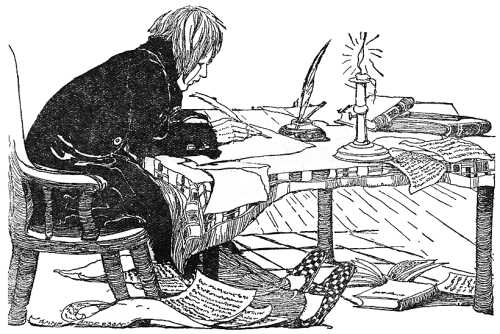
CPSIA chronicles, February 21

- For the Handmade Toy Alliance, Jill Chuckas responds to the NYT’s ever-so-clueless CPSIA editorial. The Alliance also recently published a Myth vs. Fact sheet. Among the points addressed: “Myth: Violations of the CPSIA this year will not result in penalties.” “Myth: Further clarification is all that is needed.” and “Myth: Products Tested to European Union Standards will Satisfy New US Standards”. And did you know it’s now unlawful to donate to a charity (let alone sell) a children’s item with paint on it, even if you painted it yourself using lead-free paint, if you haven’t put it out for third-party testing?
- It’s my impression that beyond the precincts of the “consumer”/Litigation Lobby groups, the bill’s original sponsors on Capitol Hill, and of course the New York Times, it’s getting harder to find all-out boosters of the law who still maintain there’s nothing wrong with it. On Tuesday, however, the Houston Chronicle did publish a perfectly inane editorial taking this view, the refutation of which is left as an exercise to the reader.
- Deputy Headmistress at Common Room has taken the lead in blogging many angles of the law and her latest must-read examines the legislative history of CPSIA’s enactment, including the roles of Public Citizen, the Consumer Federation of America, PIRG, and Sen. Mark Pryor (D-Ark.), as well as business groups like NAM, the latter of which warned against some of the law’s more extreme provisions as placing various advantages into the hands of plaintiff’s lawyers. This makes a good jumping-off point for further research on whether the ongoing CPSIA calamity should truly be regarded as a case of “unintended consequences” and, if so, unintended by whom. One tidbit among many: she says that Travis Plunkett, testifying for the Consumer Federation of America, spoke in favor of rules (not adopted) under which “all product sellers [would] be required to post bonds sufficient to cover the costs of a recall in advance of any ‘potential’ recalls.” Typical New York Times coverage of the day, by the reliably pro-regulation Stephen Labaton, can be found here.
- Tom Pearson, Punditry by the Pint:
I’ve written before how law and regulation can be an insurmountable impediment for the weakest, poorest and most powerless in our society. In this case at least we will partly realize what we’re missing when the great independent thrift and book shops start going under and fewer people make handcrafted clothing and toys for children. Still, we’ll never see what could have been in this small niche of our largely self-created social order. This is how the American dream of hope and opportunity dies, one well-intentioned, but misguided rule at a time.
Life is a messy and wonderful experience. If you try to hermetically seal life, even children’s lives, from risk, you will kill all that messiness and creativity that makes life worth living. Yes, risk can be damaging, painful and even fatal, but, in this case, the cure is worse than the disease.
Another libertarian view from J.D. Tuccille in the Examiner: “In the name of the children, we cut the kids off from their own history.”
- Yesterday (Friday) the Consumer Product Safety Commission published a bundle of letters it received pro and con on proposed exemptions from the lead rules. Plenty of raw material here for CPSIA-watchers (long PDF file);
- Since many people these days visit Overlawyered for the ongoing coverage on this topic, I’ve added a new display on the rightmost sidebar (under the red teddy-bear-as-St.-Sebastian icon) with sub-category tag links for libraries, apparel and needle trades, toys, and so forth. I’ve populated these categories with old posts somewhat in haste, so if you see omitted posts that aren’t tagged with relevant labels, give me a shout.
Public domain image: Grandma’s Graphics, Ruth Mary Hallock.
